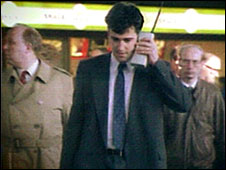Mobile Phones (Brick to Implant)

The mobile phone was born in 1973. They were the size of a brick and weighed a couple of kg, making them difficult to fit into your pocket. At a few thousand pounds each not may could afford them. Battery life was around 20 minutes, which was probably good given the weight of the phone.
Martin Cooper may not be a household name, but he is the inventor of the mobile phone. Martin and his team at Motorola pioneered the development of the phone. At that time the team faced a challenge of fitting thousands of parts into a phone for the first time. Since then massive strides have been made and now millions of people world wide own small, light, long lasting and relatively cheap mobile phone. For a lot of younger people , life without a mobile phone is probably inconceivable.
For the future Mr. Cooper believes smart phones will become chips to implant behind the ear. We will have to wait and see if this happens, but anything is possible.
If your interested in find out more on this topic, check out the BBC article 'Meet Marty Cooper - the inventor of the mobile phone'.